Worries over wastewater
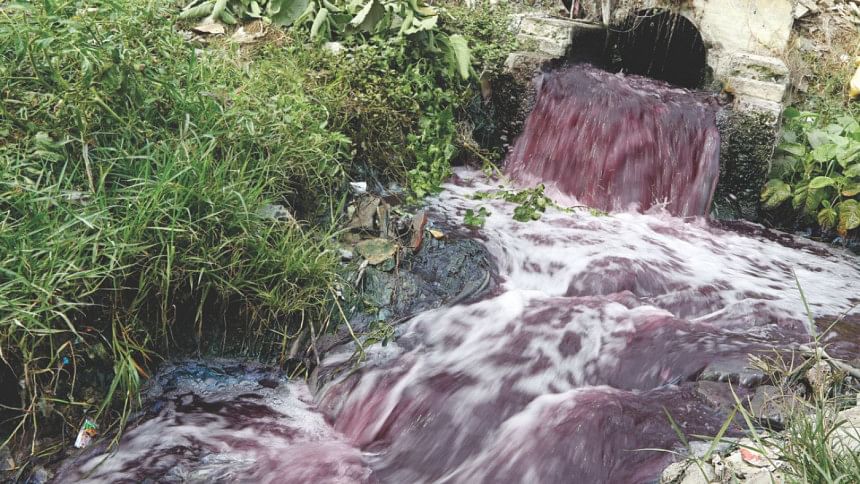
Textile industries would be dumping a mind-boggling 20,300 crore litres of untreated wastewater into the country's waterbodies every year from 2021 if the current situation did not improve, said a Buet study.
It said the pollution would be threatening fisheries, biodiversity, and groundwater.
Textile factories use on average 120 litres of water to dye and wash a kg of fabric (about two pairs of jeans) and the effluents are discharged into nearby rivers or wetlands without proper treatment, said the study of a Buet team led by Mohidus Samad Khan, a teacher at the chemical engineering department.
The untreated effluents could instigate quick changes in the aquatic ecosystems and have high economic impact on fisheries. The warm wastewater might also increase the temperature of the water bodies and affect flora and fauna, the study warned.
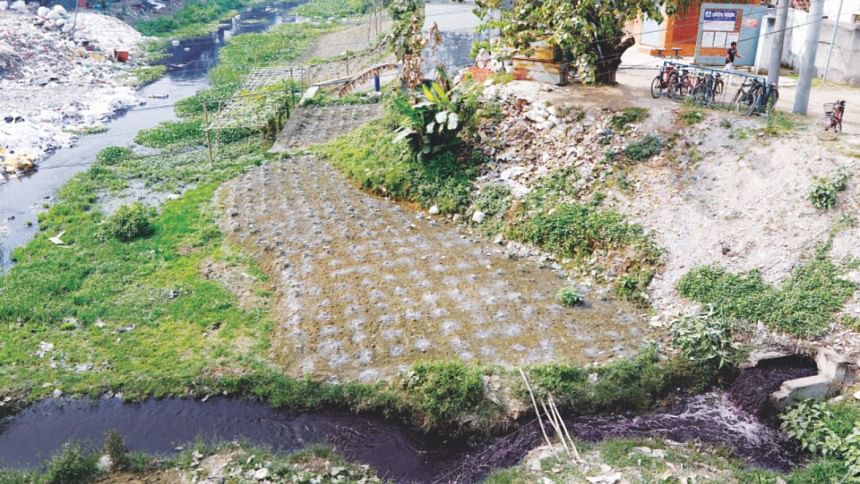
Factories pumping out water for washing and dyeing fabrics has caused groundwater levels to drop in the apparel industrial belts like Dhaka, Gazipur, Savar and Narayanganj, it said citing another study.
Rivers and water bodies near the textile industrial zones -- Dhaka, Narayanganj and Gazipur -- are the major receivers of the untreated effluents. Many villages in Gazipur and DND (Dhaka-Narayanganj-Demra) embankment are now being threatened by environmental degradation caused by textile effluents, the study published in an international journal last year said.
Referring to another study, it said textile industries near the Shitalakkhya river discharge their untreated dye with heavy metals into the river.
By consuming and using polluted water for bathing, washing and for household work, marginal people, especially the children, are becoming prone to various diseases.
And things could get even worse.
The study predicts that by 2021, the textile sector would export goods worth $50 billion a year.
Samad said the predicted yearly effluent discharge figure for 2021 and onwards was conservative since it was assumed that 65 percent woven and 15 percent knit fabric would still be imported.
“The wastewater generation has been increasing in Bangladesh and it will go up higher than the projected rate considering the steady growth of local textile industry,” he said.
The government categorises textile dyeing industries as “Red industries” (most polluting) under the Bangladesh Environment Conservation Act, 1995 and the Environment Conservation Rules, 1997 and made Effluent Treatment Plants (ETPs) mandatory for the factories.
Shahidullah Mia, an expert who installs the plants at factories, said there were over 5,000 ETPs installed in factories and those cover about 70 percent of the textile units. Small factories do not have ETPs, he said.
Sources in the Department of Environment (DoE), however, claimed that they have issued ETP installation permission to 1,376 textile factories.
According to sources in the Bangladesh Textile Mills Association, the country has around 450 spinning mills, 1,200 weaving mills and around 5,000 export-oriented dyeing factories.
There are several thousand small dyeing factories catering the local markets as well.
Factories have to run a chemical and a biological ETP, Shahidullah said, claiming that some 10 percent chemical ETPs are run as they are expensive to operate while all the factories use the biological ETPs as they are cheap. The chemical ETPs need to be operational all the time.
“Factory owners need to spend between Tk 17 and Tk 20 for treating a litre of wastewater with the chemical ETPs.”
The study, intended for policymakers, textile engineers, and environmentalist so that they could develop innovative technologies and policies for textile dyeing and effluent treatment, said a more scientific approach could reduce water usage by 23 percent.
It suggested strict monitoring of effluent treatment to curb pollution.
Iqbal Habib, member secretary of urbanisation and governance programme of Bangladesh Paribesh Andolon (Bapa), said the situation regarding environment pollution is getting worse every day.
“Individual accountability has to be ensured so that none can dump wastewater into the river without treating it.
He suggested setting up of central ETPs for clusters of factories.
Textile factory owners claimed that they have started to use modern technologies to reduce the use of water to make their plants less expensive to run.
“We have reduced water usage in washing fabrics by more than half,” said Mostafiz Uddin, managing director of Chittagong-based Denim Expert Ltd.
He mentioned a laser machine they were using to shine denims. They used to sand blast the fabric to shine them but that required a lot of water to wash them later on.
Shama Proshad Ghosh, senior general manager of Envoy Textile, a reputed denim factory in Bhaluka, said, “The parameter of our ETP is set at high standard as the discharged water is used in the fish pond on the factory premises.
“We collect samples from the ETP to test in our own lab for maintaining the quality of discharged water.
“Running the ETP is expensive. We spend Tk 24 for treating one cubic metre of water,” he said.
Monsoor Ahmed, secretary of Bangladesh Textile Mills Association (BTMA), said, “Almost all large factories run effluent treatment plants as it is mandatory.” They cost Tk 20 crore to Tk 35 crore to install.
Stringent conditions set by the DoE and delays in handing out clearance discourage textile factory owners from setting up ETPs, he said.
Quazi Sarwar Imtiaz Hashmi, additional director general of the DoE, said, “The allegation of delaying the clearance for ETP is not true. We try our best to give the clearance within the quickest possible time but whenever we find any technical problems, delays are naturally caused.”
Hashmi said, “One does not build a house without a toilet. Then why would you build a factory without an ETP? We have found factories that discharge wastewater without treating them.”


 For all latest news, follow The Daily Star's Google News channel.
For all latest news, follow The Daily Star's Google News channel. 

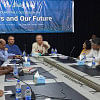



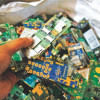

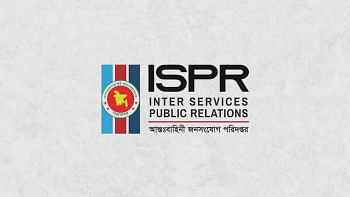
Comments